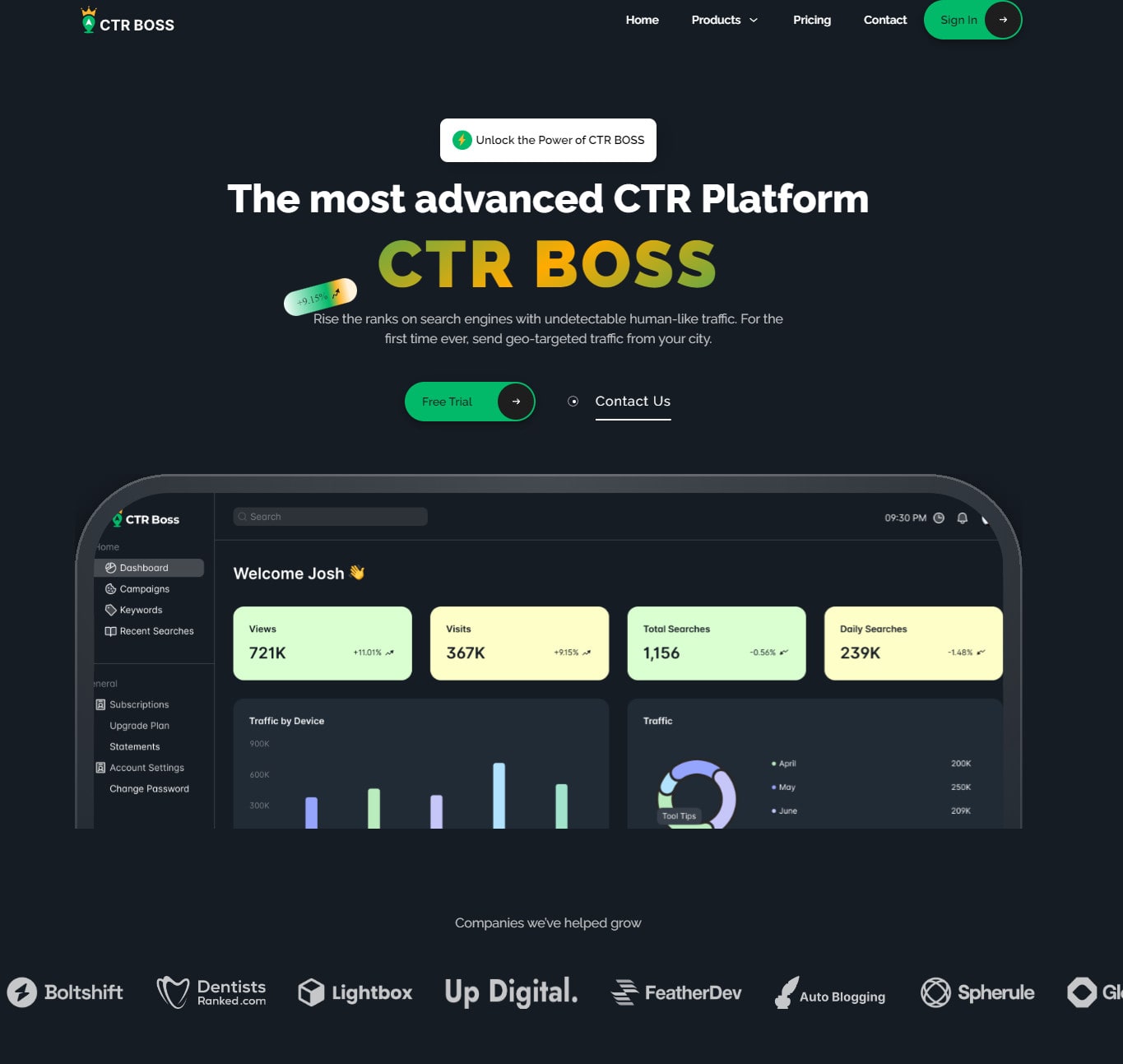How to Gauge the Effect of CTR Manipulation on Your Advertising
Understanding the nuances of click-through rate (CTR) control in advertising is essential for companies pursuing real user interaction. By checking out crucial metrics such as conversion prices and bounce rates, online marketers can reveal prospective disparities that may occur from synthetic enhancements. Making use of tools like Google Analytics and applying A/B testing can provide insights into the performance of different methods. The ramifications prolong beyond immediate data; the lasting results on brand stability and user depend on warrant cautious consideration. What stays to be discovered is exactly how these components interconnect and affect total advertising and marketing success.
Comprehending CTR Manipulation
Comprehending CTR control is necessary for marketers looking for to maximize their campaigns and make certain information honesty. Click-through price (CTR) refers to the ratio of customers that click on a details link to the overall number of individuals who check out the advertisement or material.
The effects of CTR control prolong past mere data distortion; they can undermine rely on digital marketing. When businesses count on inflated metrics, they may purchase inadequate projects, inevitably harming their roi. Additionally, systems might punish advertisers involving in such methods, bring about additional implications for their advertising and marketing efforts.
To successfully battle CTR adjustment, marketing experts must establish a detailed understanding of their data sources and analytics devices. By employing sophisticated monitoring approaches and inspecting traffic sources, they can determine uneven patterns and guarantee that their efficiency metrics mirror authentic user involvement - CTR Manipulation Press Release. This watchfulness is essential for fostering long-lasting success in a progressively affordable digital landscape
Trick Metrics to Assess
Effective analysis of vital metrics is important for evaluating truth performance of advertising campaigns and spotting prospective CTR control. One main metric to consider is the Click-Through Price (CTR) itself, which represents the ratio of users that click on an ad to the total variety of individuals who see it. A sudden spike in CTR may suggest manipulation, demanding more investigation.
Furthermore, checking conversion rates is vital. A high CTR with a reduced conversion price can signal that the clicks are not authentic or that the targeting is misaligned (LinkDaddy CTR Manipulation). Examining bounce rates can supply insight into customer interaction; a high bounce rate after a click might recommend that the website traffic is not quality-driven.

Tools for Dimension

Additionally, A/B screening tools such as Optimizely or VWO can help with testing with numerous ad versions to identify which elements drive higher CTR. These devices permit marketing professionals to examine real-time performance and make data-driven changes. Social media analytics devices, like Hootsuite or Sprout Social, can likewise contribute in recognizing CTR within social systems, giving insights right into target market habits and involvement fads.
In addition, heat mapping tools, such as Hotjar, can disclose how individuals connect with advertisements, helping to identify where improvements can be made. Integrating these tools produces a durable measurement framework, making it possible for marketers to determine the results of CTR control properly. Ultimately, the ideal option of dimension tools is vital for making notified marketing decisions and maximizing project performance.

Reviewing Long-term Impacts
One need to think about the long-lasting results of CTR manipulation on total advertising and marketing efficiency, as short-term gains can frequently mask deeper ramifications. In time, unnaturally blew up click-through rates might cause reduced trust from consumers and internet search engine alike. When individuals repetitively run into misleading techniques, they may become hesitant to engage with the brand name, causing lower conversion prices in the future.
In addition, formula updates from platforms such as Google are created to prioritize genuine involvement over inflated metrics. Companies that count on CTR control might discover themselves penalized, leading to a decrease in natural reach and exposure. This can have a cascading impact on brand integrity and client commitment, ultimately undermining the extremely goals that the first manipulation sought to attain.
In addition, the information collected from manipulated CTR might misdirect marketers in their strategy growth. Depending on manipulated data can result in misguided campaigns that stop working to resonate with the target market, leading to thrown away sources and missed out on possibilities. It is crucial for marketers to evaluate the lasting ramifications of CTR manipulation and prioritize sustainable, ethical engagement approaches for lasting success.
Moral Factors To Consider in CTR Adjustment
In the world of electronic advertising, moral considerations surrounding CTR control are paramount. While the need to improve click-through prices (CTR) can lead to short-term gains, the prospective long-lasting repercussions on brand integrity and customer count on can not be neglected.
Furthermore, moral worries reach compliance with laws such as the Federal Profession view website Payment (FTC) guidelines, which mandate transparency look at here in advertising. Stopping working to stick to these requirements can reveal organizations to lawful ramifications and harm their reputation. Marketing experts need to consider the ramifications of their techniques on individual experience and the broader market landscape.
Furthermore, the surge of man-made knowledge and automation in advertising presents more ethical dilemmas. Inevitably, moral advertising and marketing techniques should prioritize openness, sincerity, and respect for the consumer, cultivating long-term partnerships that go beyond plain metrics like CTR.
Final Thought
Finally, measuring the effect of CTR manipulation on marketing needs a comprehensive evaluation of essential metrics, including click-through rates, conversion prices, and bounce prices. Using analytics tools and performing A/B testing can give valuable insights into individual interaction and traffic top quality. Assessing long-lasting results and sticking to honest considerations is vital for notified decision-making. Inevitably, a data-driven strategy makes sure that marketing techniques work and straightened with authentic individual interactions.
Comprehending the nuances of click-through price (CTR) control in marketing is vital for services striving for genuine customer engagement.Effective evaluation of crucial metrics is essential for examining the real performance of advertising and marketing campaigns and detecting prospective CTR control.One have to take into consideration the long-lasting impacts of CTR manipulation on overall marketing performance, as temporary gains can often top article mask deeper ramifications.In the world of electronic advertising, moral considerations surrounding CTR control are vital.In verdict, gauging the influence of CTR control on advertising calls for a comprehensive evaluation of key metrics, consisting of click-through prices, conversion rates, and bounce rates.